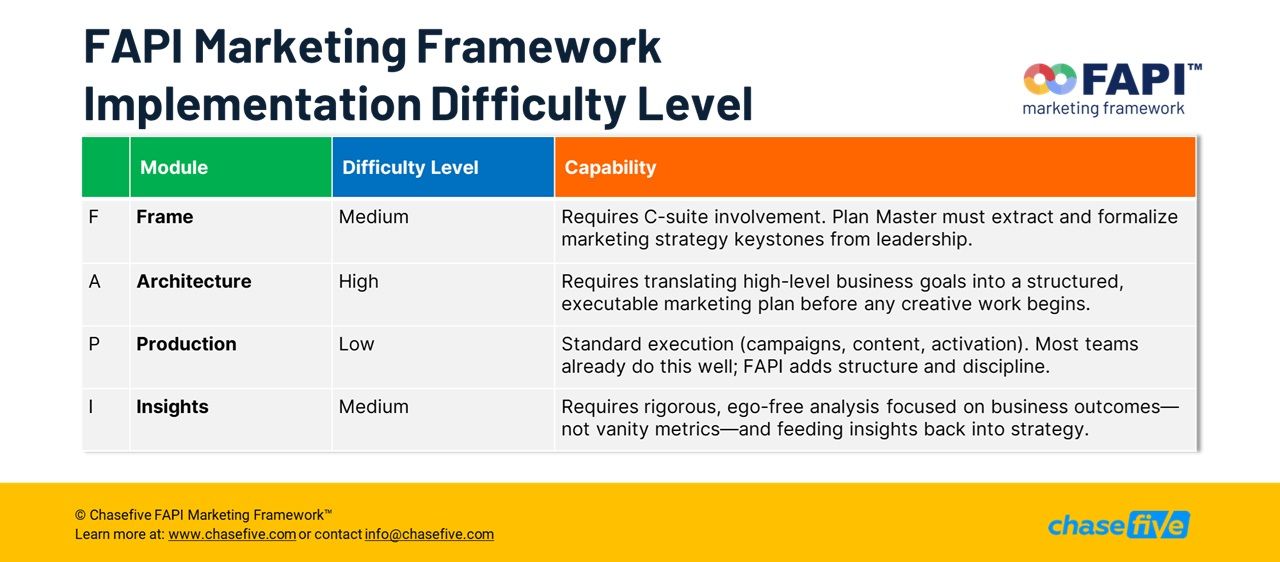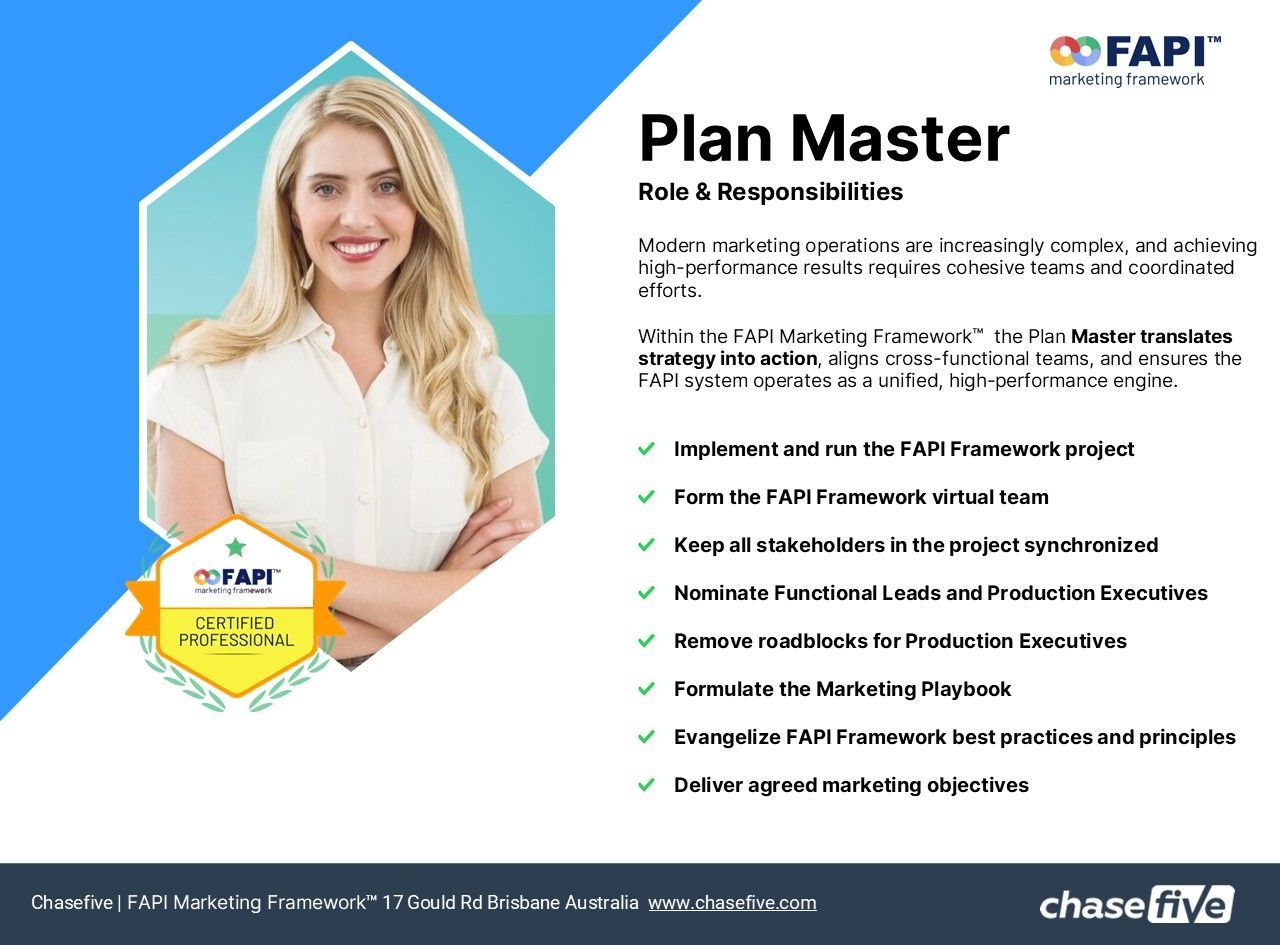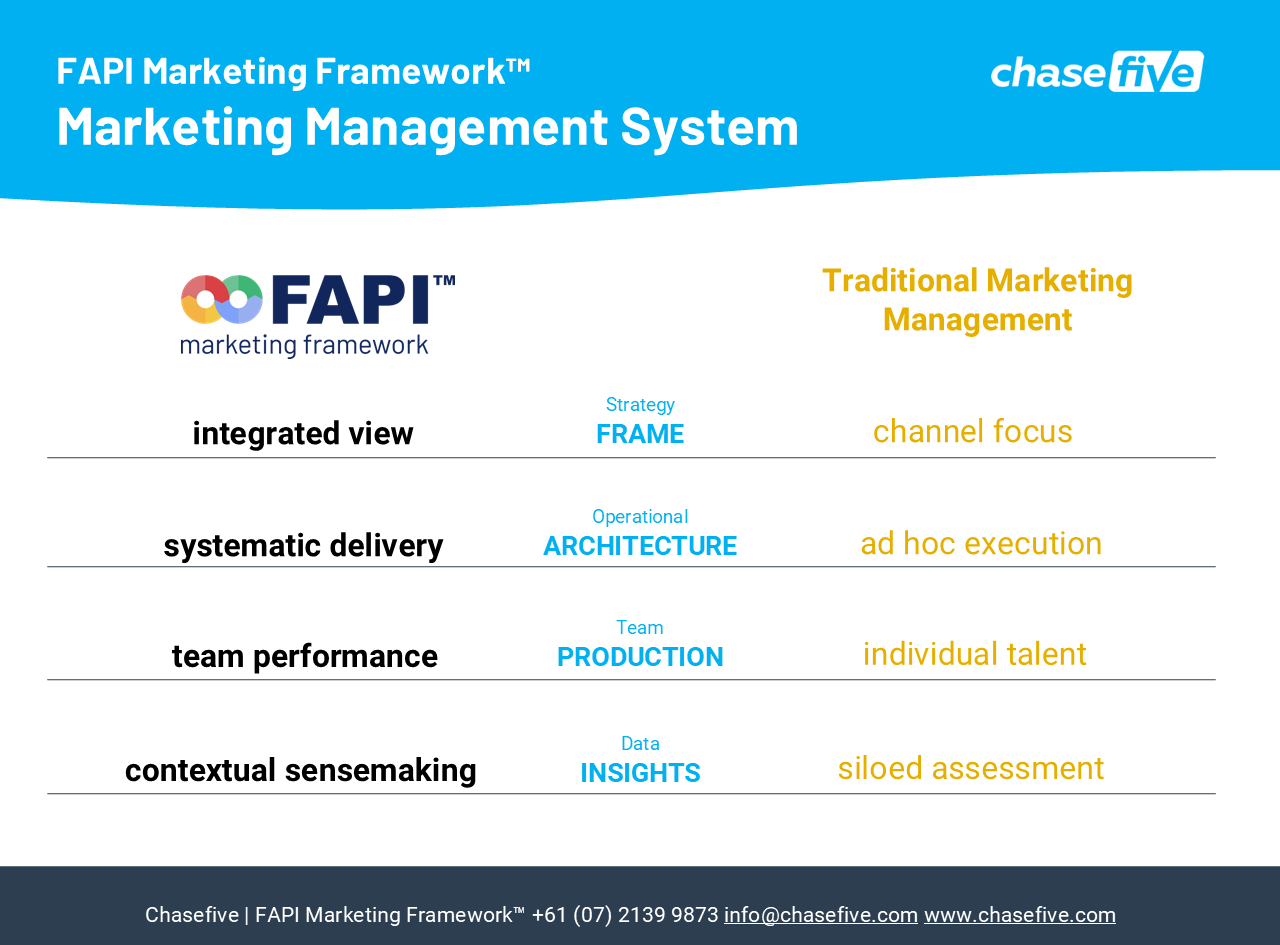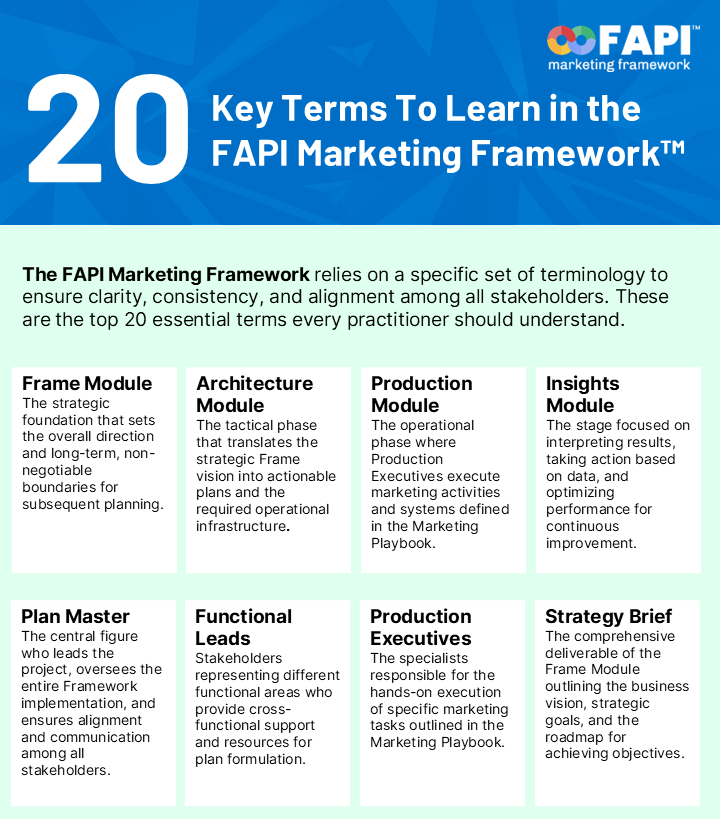Understanding Tactical Marketing Models Through the FAPI Marketing Framework
In modern marketing, one size does not fit all. Every business operates within unique dynamics shaped by its audience, industry, and go-to-market strategy. The FAPI Marketing Framework provides clarity by breaking down these dynamics into four distinct Tactical Marketing Models—each defined by two key strategic parameters:
- Ownership of the end-user database – Does the company directly own and control its customer data, or does it rely on intermediaries?
- Transaction velocity – Are customer transactions frequent and high-volume, or infrequent and high-value?
By mapping these parameters into a marketing models matrix, the FAPI Framework enables the Plan Master (the marketing leader or strategist) to identify the most effective marketing architecture and tactics for a business.
The Four Tactical Marketing Models
1. Product Marketing Model
High transaction velocity + No direct database ownership
This model applies when products are sold through intermediaries, such as retailers, and the company has little control over the customer database.
Key focus areas: Demand-generation campaigns, sales enablement tools, and customer retention strategies that rely on product feedback and adoption rather than direct engagement.
Example: An ice cream manufacturer like Häagen-Dazs, which sells through supermarkets, focuses on mass awareness and brand preference rather than direct customer relationships.
2. Database Marketing Model
High transaction velocity + Direct database ownership
Here, businesses own their customer data and can directly engage with their audience at scale.
Key focus areas: Data-driven marketing strategies, scalable marketing automation, loyalty programs, and e-commerce.
Tactics: Multi-channel campaigns, localized marketing efforts, and customer advocacy programs to drive retention and repeat purchases.
Example: An ice cream manufacturer selling directly to consumers through its online store while managing loyalty rewards and personalized offers.
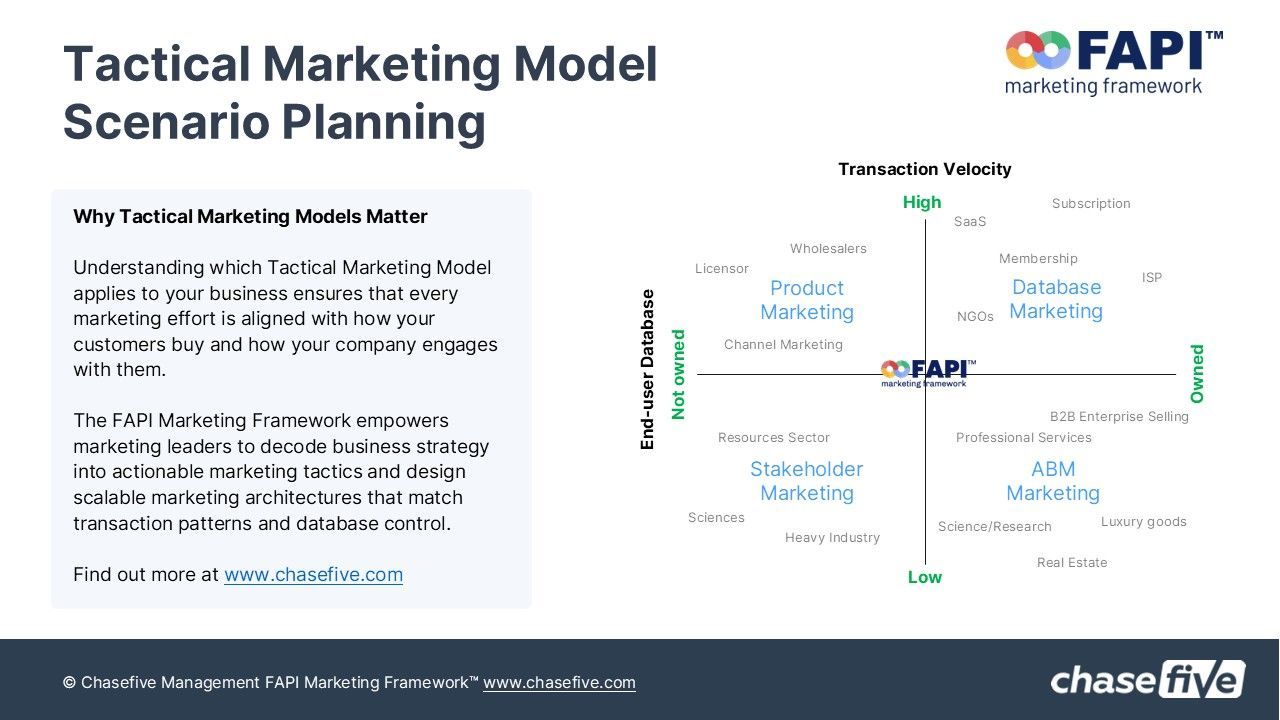
3. Account-Based Marketing (ABM) Model
Low transaction velocity + Direct database ownership
ABM is ideal for businesses selling high-value or complex products where relationships matter more than volume.
Key focus areas: Highly personalized campaigns, nurturing decision-makers, and aligning marketing closely with sales.
Example: Enterprise software providers, professional service firms, or even luxury car manufacturers like Lamborghini use ABM to build deep, long-term relationships with a smaller, targeted audience.
4. Stakeholder Marketing Model
Low transaction velocity + No direct database ownership
This model is common in sectors like heavy industry, where transactions are infrequent and customer data is often mediated by distributors or government entities.
Key focus areas: Public relations, building strong commercial relationships, industry advocacy, and networking rather than direct-response marketing.
Example: Mining or infrastructure companies that rely on policy advocacy and stakeholder relationships rather than large-scale advertising.
Why Tactical Marketing Models Matter
Understanding which Tactical Marketing Model applies to your business ensures that every marketing effort is aligned with how your customers buy and how your company engages with them. The FAPI Marketing Framework empowers marketing leaders to:
Decode business strategy into actionable marketing tactics.
Design scalable marketing architectures that match transaction patterns and database control.
Focus resources on the strategies that will generate the highest impact.
By applying these models, businesses can build a marketing engine that is not only efficient but also deeply aligned with customer behavior and long-term growth objectives.
Sign up for free to the
FAPI Marketing Framework Academy to learn more
